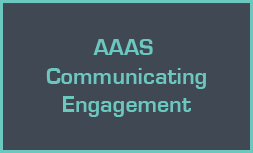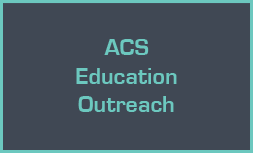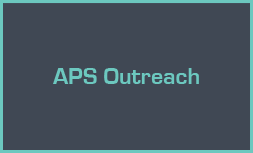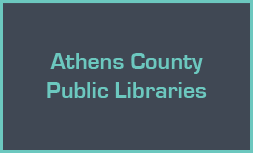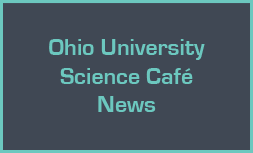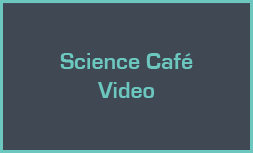Feature
A Museum Without Walls
Facilitating STEAM Partnerships in Rural Settings
Connected Science Learning May-July 2017 (Volume 1, Issue 3)
By Jennifer Parsons, Sara L. Hartman, Jennifer Hines-Bergmeier, and Christie Truly
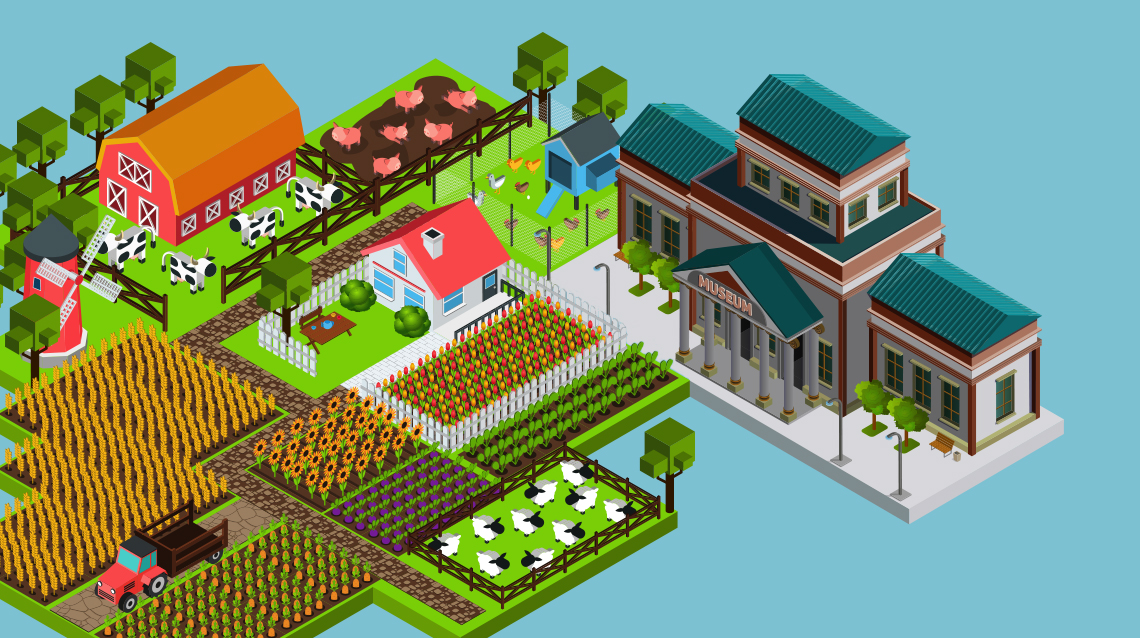
The Ohio Valley Museum of Discovery strives to provide a hub for play-based science, technology, engineering, art, and math (STEAM) learning experiences in rural southeastern Ohio. The museum works to develop meaningful connections between preK–12 schools, community nonprofit organizations, local STEAM professionals, and university outreach programs.
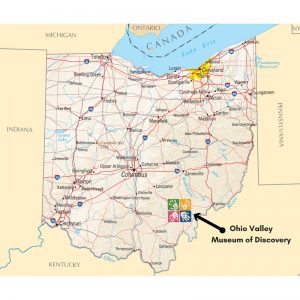
The Ohio Valley Museum of Discovery (OVMoD) strives to provide a hub for play-based science, technology, engineering, art, and math STEAM learning experiences in rural southeastern Ohio, and create reciprocal, collaborative relationships that bridge the gap between formal and informal learning environments. The museum works to develop meaningful connections between preK–12 schools, community nonprofit organizations, local STEAM professionals, and university outreach programs.
Founded in 2006 as a museum without walls, OVMoD opened a physical location in a small shopping mall in 2011. The museum continually refreshes exhibits and offers frequent live programming to accompany exhibit content. Between 50 and 75 visitors attend the museum each day, although special events and collaborations at the museum have attracted hundreds of visitors at a time. At present, OVMoD has secured a new standalone location that will allow the museum to continue building upon its reputation as a transformative hub for exploratory, hands-on education.
Although outsiders have historically been associated with forced change and criticism of rural residents’ current practices, OVMoD’s model, discussed in this article, may help overcome long-standing barriers to community–school–university collaborations in rural settings. Capitalizing on the close connections within rural communities is a key part of developing an interconnected STEAM learning ecosystem within those areas, along with reciprocal collaborative partnerships founded on mutual respect and trust.
Life in Rural Ohio
The museum was formed in 2006 as a result of grassroots community discussions about providing hands-on STEAM learning experiences for children, youth, and families in southeastern Ohio, near the rolling foothills of the Appalachian Mountains. Residents have access to natural beauty and a thriving local food movement, an active arts scene, and environmental organizations focused on sustainable energy initiatives. Additionally, acres of deciduous forests, over 20 mi. (32 km) of connected bike paths, and several state parks provide abundant outdoor informal learning opportunities. Universities in the region offer further educational opportunities and employ a large number of STEAM professionals.
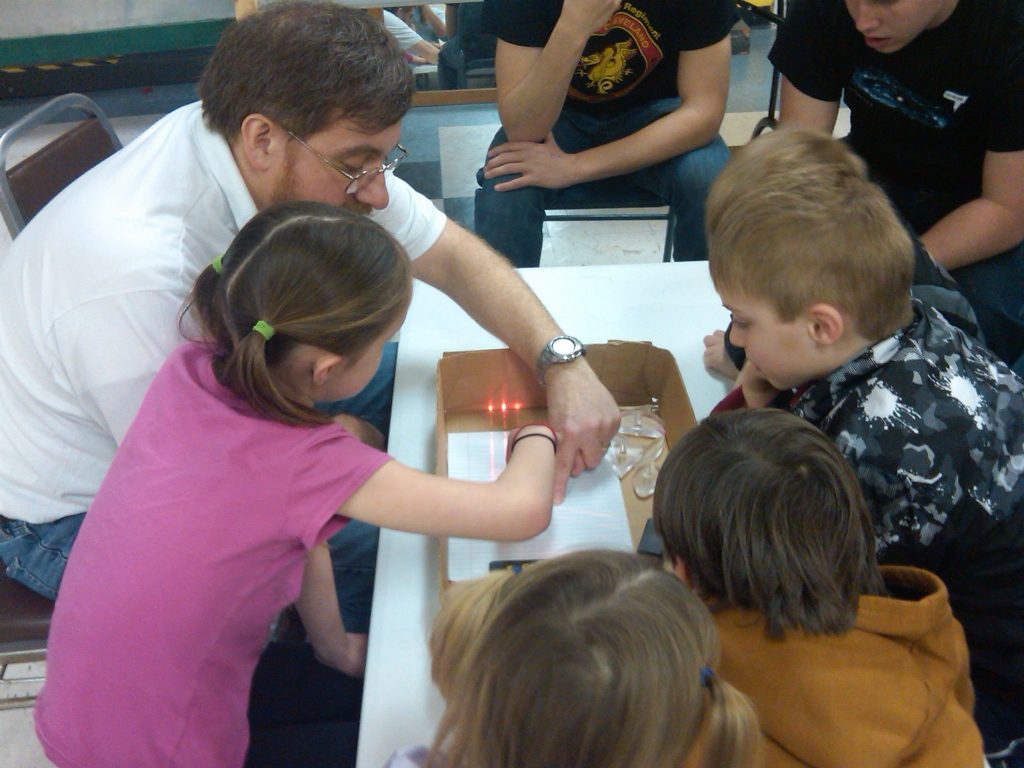
However, economic hardships accompany the region’s natural beauty and educational resources. More than 30% of the region’s children experience food insecurity and more than 25% of its residents live below the poverty line (Larrick 2016; Pollard and Jacobsen 2014). A focus on science education and access to informal STEAM learning experiences in rural settings is often limited (Avery 2013; Hartman and Hines-Bergmeier 2015). Only 12% of children’s museums are located in rural areas (Association of Children’s Museums 2015). By nature, rural communities are closely connected. Collaborative partnerships within rural settings often develop organically (i.e., they are not forced).
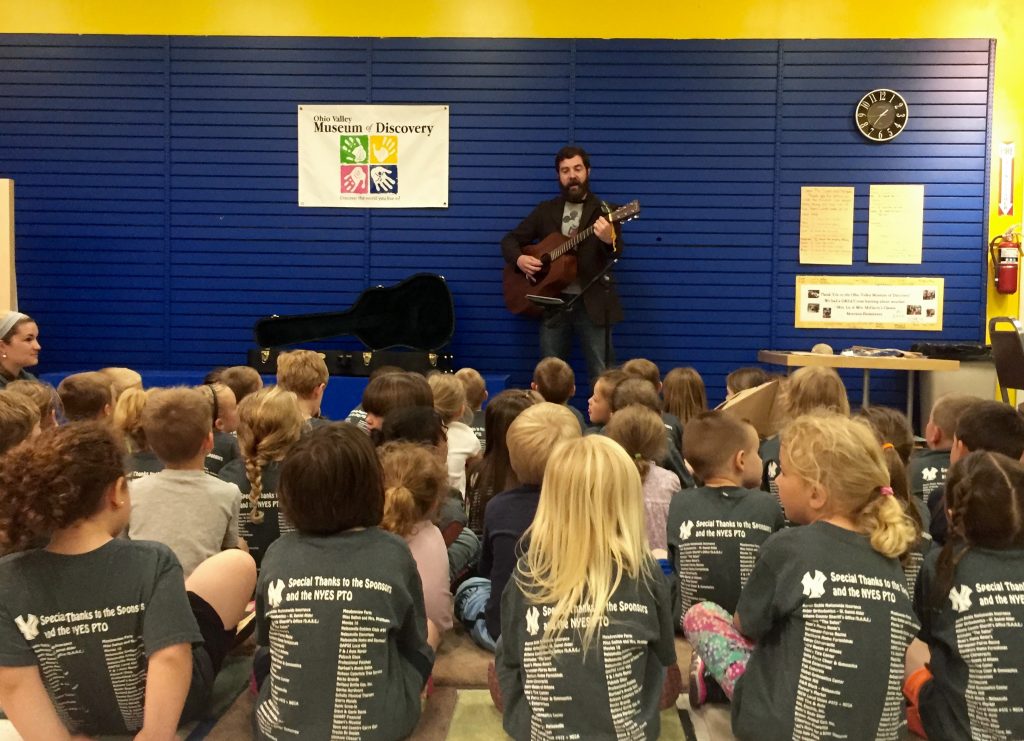
Before the inception of OVMoD, the nearest STEAM-focused museum was more than 70 mi. (113 km) away, a distance that was both cost- and time-prohibitive for many families (Hartman and Hines-Bergmeier 2015). These economic hardships, coupled with specific characteristics of rural communities (e.g., outsider distrust) and community–university power dynamics, created the need for a community entity such as OVMoD to serve as an interconnected hub for STEAM learning. See Figure 1 for a visual depiction of a vibrant STEAM learning ecosystem in a rural setting.
Figure 1
A Vibrant Learning Ecosystem
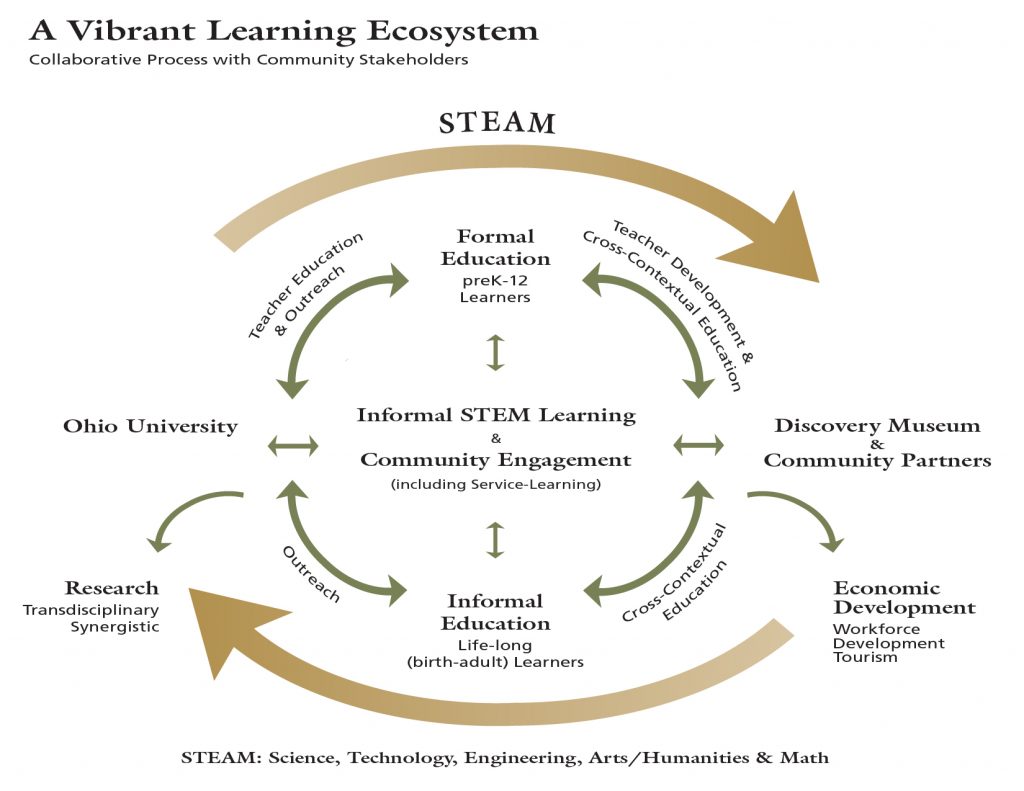
Learning Through Play
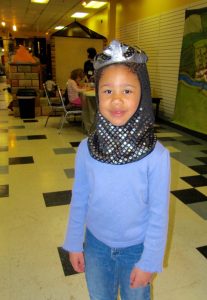
The benefits of play include healthy brain development, creativity, and conflict resolution skills, as well as increased physical activity and emotional well-being (Ginsburg 2007). Play-based learning with a STEAM focus is central to OVMoD’s educational mission. The museum even had a conference presentation about its commitment to playful, STEAM-based learning. But research reveals that time allotted for play-based learning in American schools is decreasing, despite empirical data that suggest reduction in playtime is detrimental to students (Pellegrini and Bohn 2005).
Informal learning environments such as museums, libraries, and makerspaces provide playful spaces where students create, connect, and explore. The success of informal learning environments may be directly related to the fact that learning occurs away from the “constraints of standards-based testing and statewide curriculums” (Denson et al. 2015, p. 14), suggesting that open-ended educational experiences provide constructive learning opportunities.
OVMoD was founded on the principles of constructionism and constructivism (Sheridan et al. 2014), philosophies that require active participation by the learner to engage with both materials and concepts. Parents, university professors, and preK–12 educators responsible for creating the museum recognize the value of learning through play. Visitors to the museum are encouraged to explore, move about the space, interact with hands-on exhibits, and create something new to better understand the world around them.
Facilitating a Vibrant STEAM Learning Ecosystem
Develop Successful School Partnerships
To achieve desired learning goals, an informal learning entity should form partnerships with preK–12 educators (Russell, Knutson, and Crowley 2013). Consequently, bridging formal–informal learning environments is at the forefront of OVMoD’s educational goals; developing collaborative partnerships with area teachers is a foundational priority.
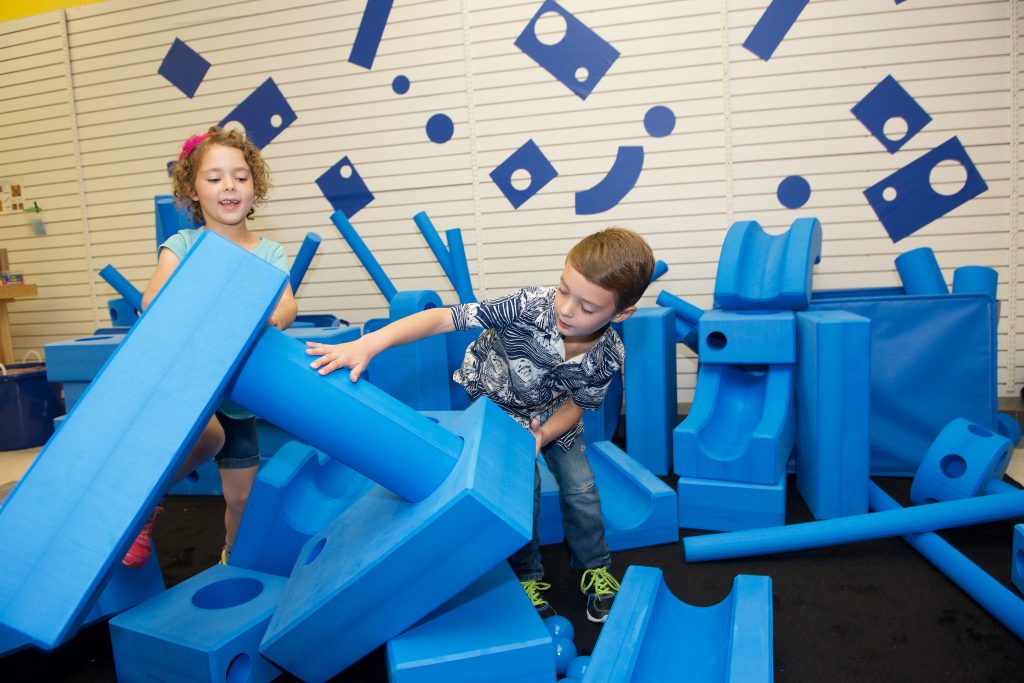
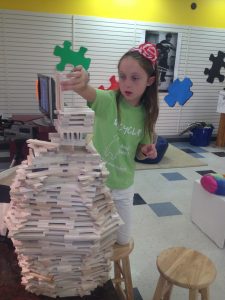
In effective preK–12 partnerships, the classroom teacher is willing to plan with OVMoD education staff and is engaged during programming, and the partnership remains sustainable over time. Several practices are used to sustain collaborative partnerships between OVMoD and preK–12 schools. To mitigate the effects of outsider distrust, the museum attends community events, donates staff time and materials during informal STEM nights hosted by schools, and frequently sends information about museum events via students’ weekly home–school communication folders. Many schools cannot afford busing to OVMoD’s physical site, so the museum frequently goes on the road with a selection of traveling exhibits, such as Brain Teasers & Logic Launchers, Messy Science, and The Art of Construction & Experimentation. Additionally, the museum seeks grant funding to help offset travel and admission fees.
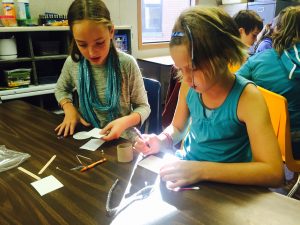
Of utmost importance is the communication between OVMoD’s educators and teachers that occurs before, during, and after educational programming. Before educational programming, museum educators establish close ties with teachers to determine their curricular, standards-based goals; understand specific needs of students with disabilities; and determine students’ prior knowledge about a particular topic. Thus, each program delivered at OVMoD is specifically tailored to a teacher’s or school’s educational needs and goals.
During educational programming, museum educators invite teachers to be actively and playfully engaged in all parts of the learning activities. After the programming, museum educators provide teachers with materials (i.e., children’s literature suggestions, online learning modules) that extend learning in the teacher’s classroom and communicate with school-based partners to improve upon future collaborations, asking:
- Do both partners feel that learning objectives were met?
- What components of the programming were most effective?
- What could OVMoD do to improve future experiences?
- Does the preK–12 partner want to collaborate with OVMoD again?
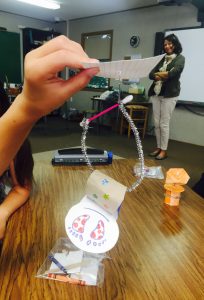
Because OVMoD’s STEAM learning experiences are designed to be part of a series of well-developed and ongoing interactions between teachers and museum educators, the last question is particularly important. In a rural setting, this type of sustained interaction is essential to developing mutual respect and trust. As a future goal, OVMoD wants to continue developing collaborative partnerships by embracing a coteaching model with area teachers. The coteaching model will emphasize coplanning to ensure that teachers’ curricular goals will be met by OVMoD’s programming and flexible content delivery, which may include shared museum–teacher instruction, assisted instruction (e.g., museum educator leads, teacher assists), or museum-led instruction with teacher observation. Doing so will foster additional connections across the formal–informal divide. Through these collaborative practices, regional preK–12 educators are able to view OVMoD as a true partner in STEAM learning initiatives.
Build Reciprocal Collaborations
A key component of OVMoD’s museum model is its dedication to collaboration with nonprofit organizations and other educational entities in the region. Because funding in rural communities is often limited, OVMoD collaborates with local partners to maximize resources, time, and talent. These partnerships also help position the museum as an embedded community partner, lessening the impact of outsider distrust in rural settings.
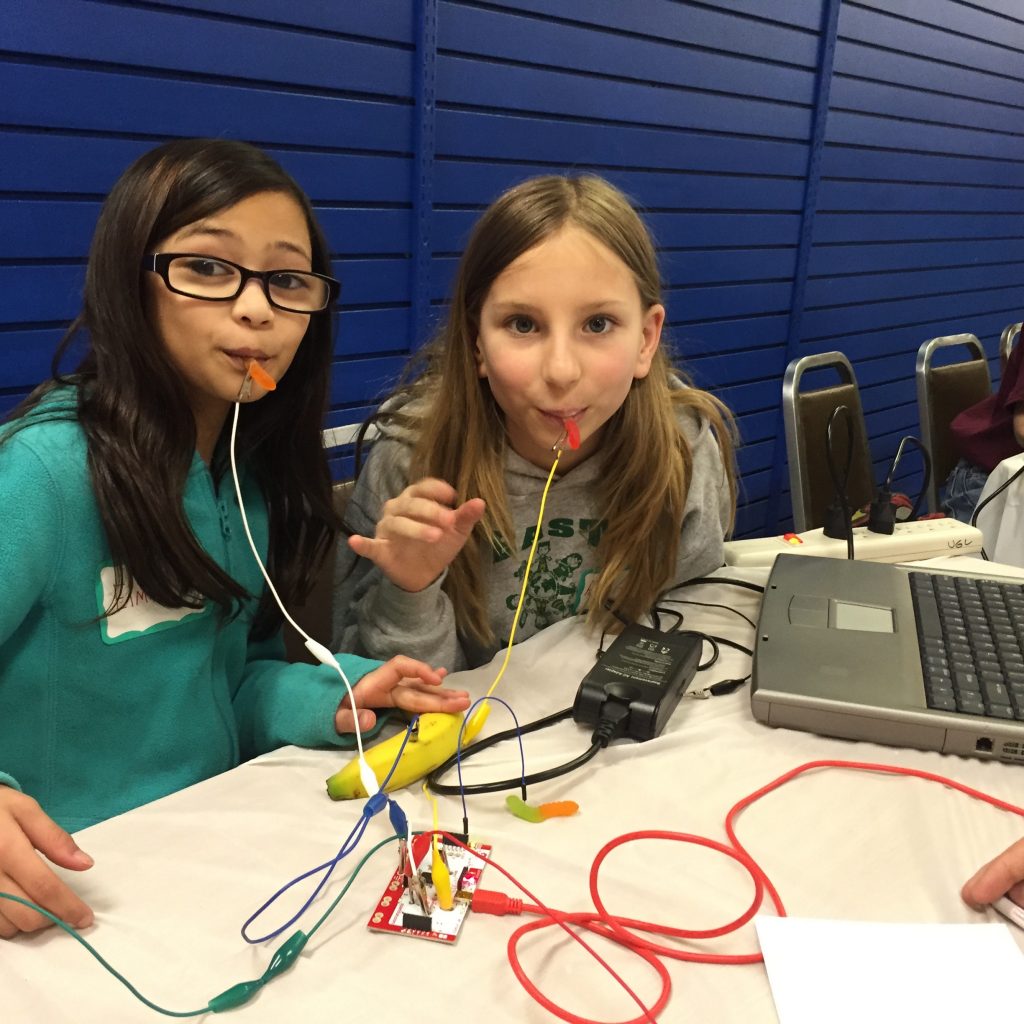
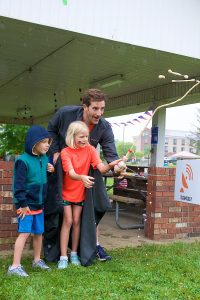
For OVMoD, effective reciprocal partnerships are founded on several characteristics, including an understanding of and commitment to a shared vision. To varying degrees, a willingness to share resources is also necessary in a rural, underserved region. OVMoD often provides a location, staffing, or materials for both museum and general community events, while the partner contributes resources such as volunteers or supplies. Finally, OVMoD pursues multiple experiences with collaborators, so that the benefits to the museum and its collaborators have an opportunity to fully develop. For example, for several years, the museum partnered with local libraries to provide a series of summer programming events. Through cohosting multiple events, OVMoD and the libraries developed trust and a shared vision for the events’ outcomes and goals (i.e., level of participant engagement and attendance).
Building reciprocal collaborations with school-based partners meets the museum’s mission of play-based, open-ended exploration for children as well as teachers’ curricular requirements. The museum has several ongoing partnerships with local preschools and K–12 teachers. The museum also collaborates with schools on learning events that occur outside of traditional school hours.
Turning an Exhibit Into Art
Week by week, rows of recycled milk cartons glued in a circular pattern to flattened cardboard grew inside the museum storefront in Athens, Ohio. As visitors walked by, they would often shout out guesses: “It’s a fort!” “Are you building a castle?” Finally, the structure became recognizable: “An igloo! You’re building an igloo!” The next question from visitors was, “How many milk cartons did you use to build that?” or commonly, “Why are you building an igloo inside a museum in southeastern Ohio?” In fact, it was the adults who asked, “Why?” The children only asked if they could climb inside.
When OVMoD learned of a digital museum exhibit competition promoting sustainability, energy conservation, and recycling, the museum applied for funding and collaborated with local energy-conscious groups. Community members donated recyclable materials and helped construct the igloo. The museum became one of the educational forces behind the city’s bid to win the Georgetown University Energy Prize, a $1 million contest for energy-conscious social change. Later, as a result of collaborative partnership, the milk cartons transformed again.
Upon seeing OVMoD’s Green Revolution exhibit, local artist Kasey Jones questioned the board about future plans for the igloo. She had been commissioned by the National Aquarium in Baltimore, Maryland, to create a participatory art piece for Artscape 2016, a large, free art festival, and was looking for recycled materials. Jones disassembled the igloo and reimagined the milk cartons as bioluminescent jellyfish, a species recently discovered in the Mediterranean Sea. Festival visitors completed the art installation by tying recycled plastic bags onto the milk cartons to create jellyfish tendrils. A string of rope lights inside each jellyfish lent an ethereal glow to the evening festival experience. A slideshow details the progress from milk cartons to igloo to jellyfish and a youth-focused podcast discusses this project in-depth. The igloo-turned-jellyfish represents the playful learning and creativity that’s possible in a rural discovery museum.
Another reciprocal partnership grew out of a shared interest in sustainable energy systems. UpGrade Athens County is a local sustainable energy movement with the goal of competing for the national Georgetown University Energy Prize. With funding from this education partnership and the Smithsonian’s Green Revolution digital exhibit, OVMoD created a variety of exhibits, such as the milk carton igloo (see sidebar), that sparked conversations between adults and children about ways to reduce, reuse, and recycle. The igloo project blends STEAM topics such as structural engineering, cultural awareness, artistic creation, community involvement, and mathematics. Visitors to the Green Revolution exhibit were encouraged to play with recyclable materials to create something new. Consequently, several entities worked together to create a synergistic collection of green energy initiatives within the region. Other regional initiatives included electric vehicle loans from a bank, LED bulb distribution from energy companies, and high school students’ creation of an energy-conscious card game that was displayed by OVMoD.
The museum regularly works with partners to improve the collaborative process. Post-event reflections are conducted to investigate whether learning objectives were met, identify parts of the event that went well, and recommend changes that could enhance future events. Reciprocal partnerships create greater regional visibility for all organizations and extend the reach of educational STEAM programming in the region. Opportunities to collaborate now arise organically due to this increased regional visibility.
Create Meaningful Volunteer Experiences
OVMoD relies heavily on volunteers and works hard to leverage the close community connections within a rural setting. The OVMoD board is the epitome of a “working” board of directors, whose responsibilities range from cleaning the building to writing grants to designing exhibits. Volunteers—typically, community members, high school students, and students from Ohio University—help assemble exhibits, work during open hours, and assist with staffing vacancies.
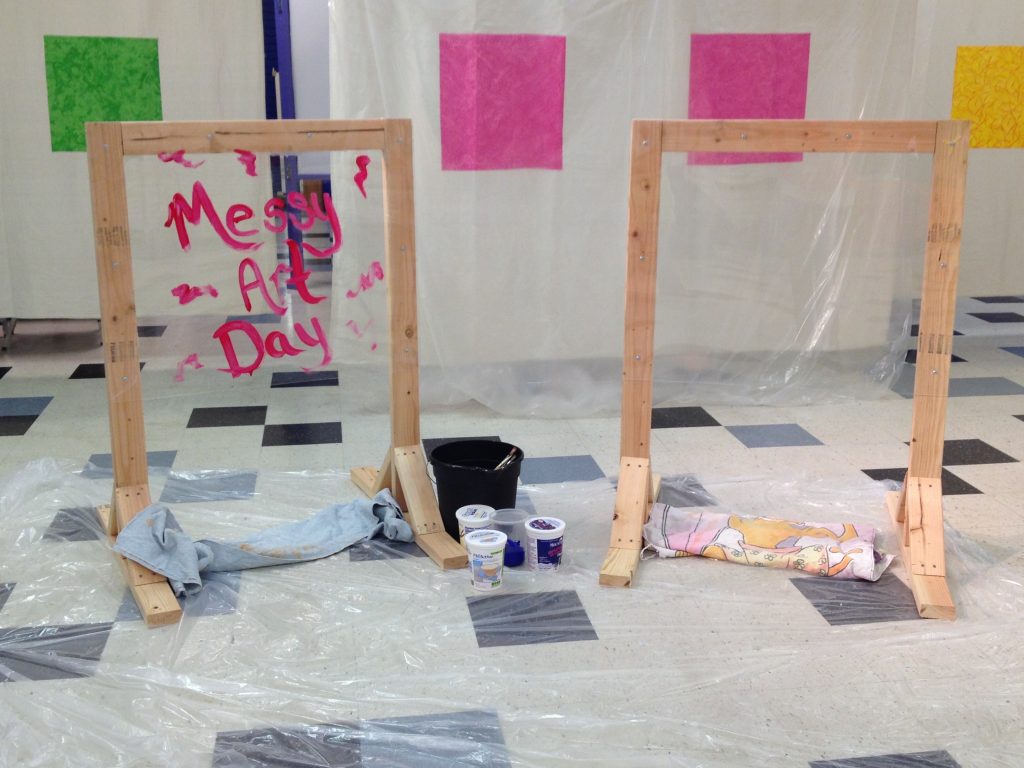
OVMoD attracts volunteers by attending recruitment fairs at regional universities, communicating with high school educators, and maintaining a strong presence on social media sites. Museum staff thoughtfully pair volunteers with activities that feel meaningful and accessible to them. An increase in service-learning courses at a local university has provided several repeat volunteers. These include:
- medical students, some of OVMoD’s most longtime and dedicated volunteers.
- students enrolled in the Ohio University College of Education’s community engagement class. Each semester, dozens of volunteer college students become familiar with the goals of the museum, benefitting OVMoD immediately and growing a long-term relationship with the university.
- middle and high school students. For example, a local high school sponsors a “Make a Difference Day,” where the museum is a popular destination for students seeking a meaningful volunteer experience. Some of these high school students go on to become regular volunteers.
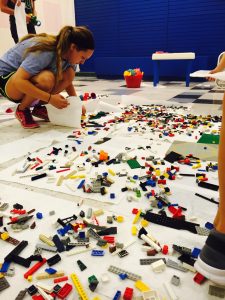
Shared volunteer experiences can help break down the barrier between campus and community. Volunteers occasionally transition from Saturday staffers and exhibit designers to museum board members and are often OVMoD’s most effective advocates on campus and throughout the community. The museum measures its effectiveness in recruitment according to the number of volunteer requests within a semester and the number of repeat volunteers. Community members and students will often walk by the museum and ask about volunteer opportunities based on the active learning they observe.
Leverage Local Expertise
OVMoD is fortunate to have a state university (Ohio University) and a community college (Hocking College) nearby, as well as a community college/private university (University of Rio Grande) within reasonable travel time. These institutions, combined with local professionals and community groups, foster a vibrant STEAM learning ecosystem.
Reaching out to student professional groups involved in public outreach and community engagement has resulted in numerous events and programming at OVMoD. Collaborations with these individuals and other interested faculty and students at Ohio University have led to thematic events such as the Science of Music, Forensic Science, and Robotics.
One local university faculty member began collaborating with the museum for a Physics Day and maker events and soon progressed to board member and collaborator for full museum exhibits. He and a high school science teacher are currently assisting with the implementation of a makerspace-specific grant and STEAM-focused, hands-on workshops for the museum. These collaborations provide the museum with content expertise, design concepts, and experience for best practices in maker education while OVMoD contributes community space for workshops, educational staff, and increased publicity for events. Through a partnership with the museum, a high school class designed and constructed an elaborate contraption called the “Green Machine” to be part of the Green Revolution exhibit.
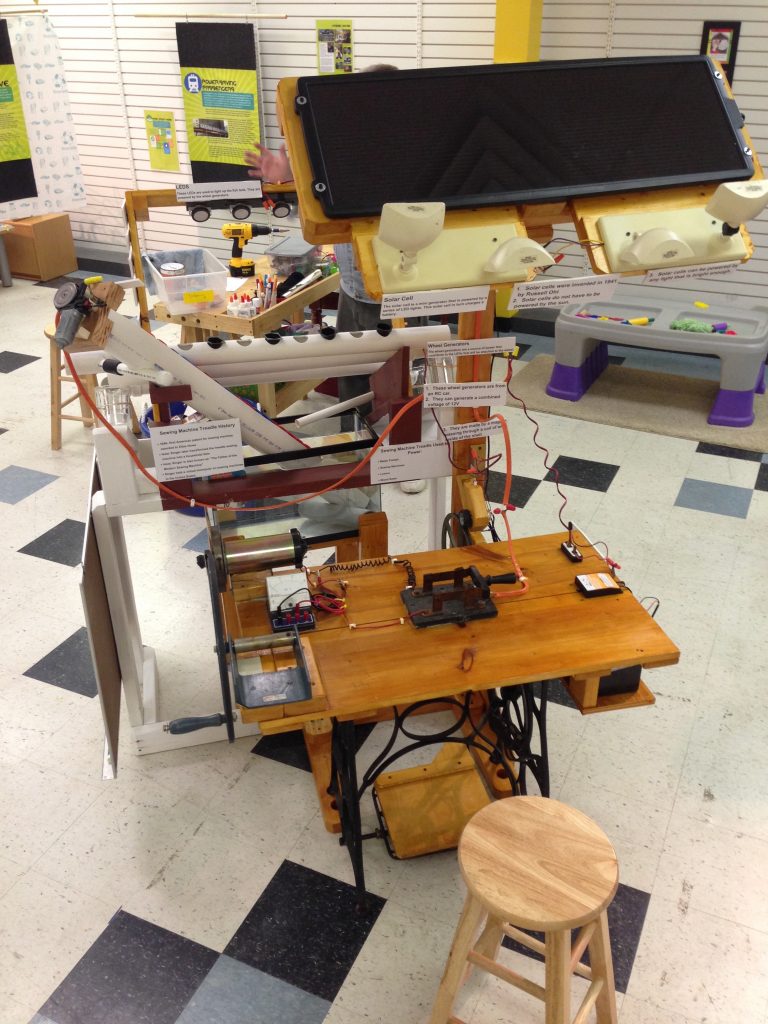
OVMoD also collaborates with other informal education groups within the region, including Rural Action and the Athens Soil & Water Conservation District, to highlight the environment, natural wonders, and history in the region. Not only do the collaborations bring exciting programming to the museum to share with the public, but these experiences also provide professional development and service-learning opportunities for college students, preK–12 teachers, and faculty. To engage the public, OVMoD works with volunteers to select effective resources and STEAM approaches (see Figure 2). Finally, Ohio University, like many universities, is committed to economic development through increased educational opportunities at all levels of learning.
Engage in Frequent Community Outreach
Local outreach events promote visibility within the community, are an additional way to collaborate with preK–12 partners, and connect with residents who are unlikely to enter a traditional museum. Since its inception, OVMoD’s board of directors brought interactive STEAM learning activities to regional events. These early events allowed the museum to respond to needs of families in rural communities in a cost-effective manner while building trust with community partners. The museum transported early handmade exhibits and demonstrations to local festivals and later traveled with updated exhibits to local libraries and schools.
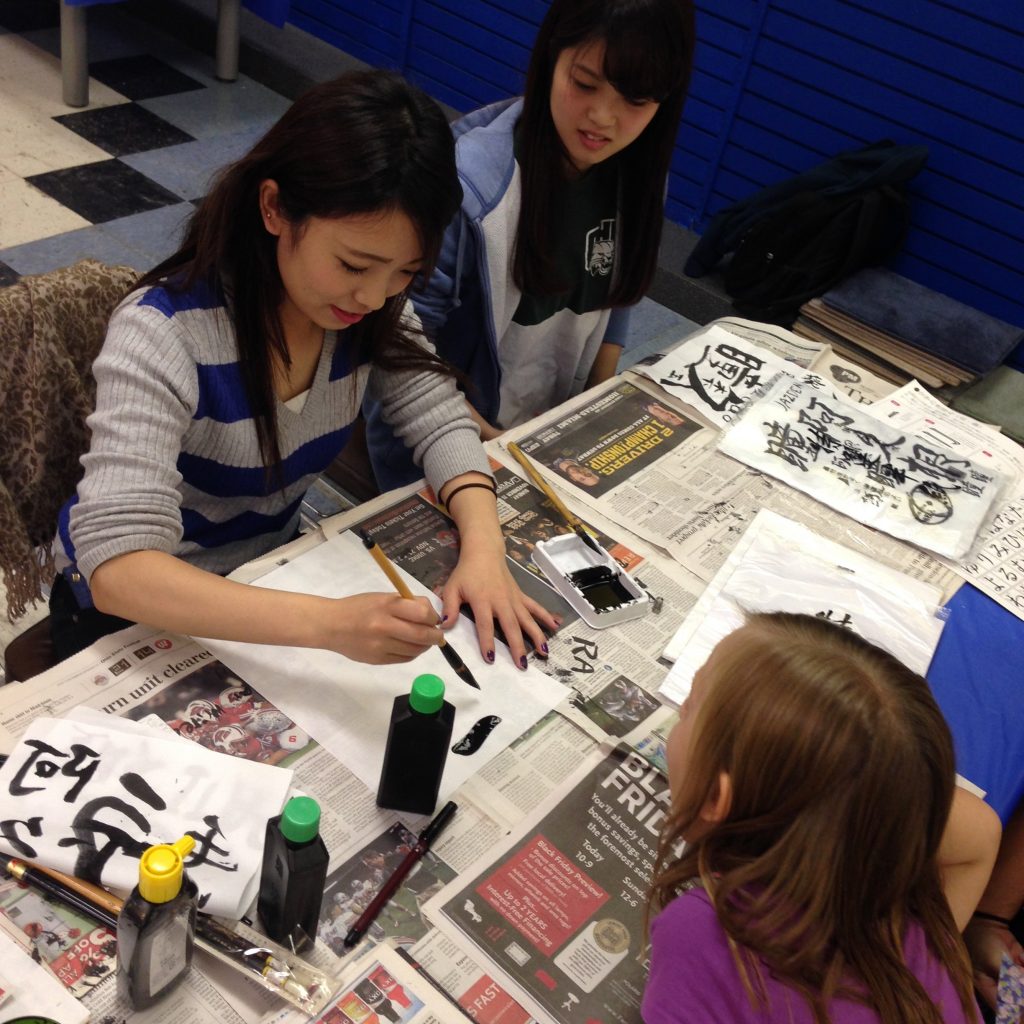
In 2011 local festivals requested OVMoD exhibits to set up in their family areas. Since then, the museum has been bringing activities to the Pawpaw Festival, the Parade of the Hills, and other local festivals. Over the years, the museum has brought puppet shows, dinosaur artifacts, logic and critical thinking puzzles, science demonstrations, and construction exhibits to public libraries throughout the region. Additionally, elementary schools have requested that the museum bring activities to informal learning events. This year, the museum expects to be part of four or five informal STEM nights at local preK–12 schools. The events are always busy, with caregivers asking how to duplicate some of the activities at home and others not wanting to leave the stations without figuring out how something works.
In 2017 OVMoD and the libraries will collaborate on the biggest project yet: creating STEAM Discovery Packs for open-ended exploration. Each pack will include thematic materials that allow participants to engage in hands-on STEAM exploration. For example, one theme is called “Get Wired” and includes materials such as Snap Circuits, energy balls, Arduinos, tablets, and assorted equipment (e.g., art supplies, alligator clips, wires, multimeters). The project will partner service-learning students at Ohio University with high school students, high school teachers, content experts, and youth-focused groups. These projects will seek to boost engagement with STEAM-related topics in middle school and high school while inviting students to share creations and concepts both in person and digitally.
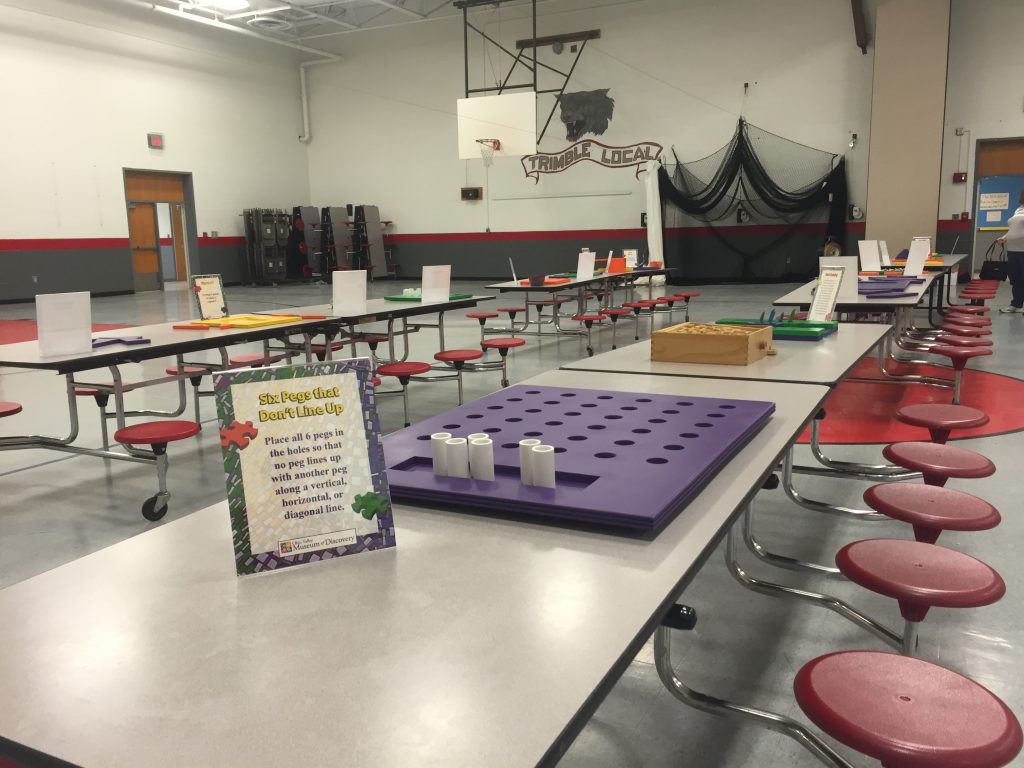
Use Multiple Feedback Methods
OVMoD solicits evaluation from visitors in several ways. Visitors may leave feedback on the museum’s Facebook page. A “post a note” wall at the exit of the museum allows visitors to immediately offer comments. During open hours, museum volunteers regularly distribute a participant survey, which asks descriptive questions (e.g., “How did you learn about the museum?”) and open-ended questions (e.g., “What did you enjoy about your experience at OVMoD today?”). During check-in, museum staff collect additional descriptive data about where visitors live and how long it took them to reach the museum. OVMoD found that a majority of the museum’s attendees lived within a 25- to 30-minute radius of the museum, which prompted outreach efforts in the more rural areas of the region. As a result, OVMoD is seeing increased attendance from some of these more remote areas.
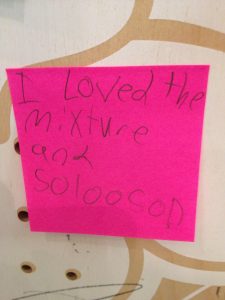
Museum educators also seek ongoing feedback from teachers who bring their classes to the museum so that educational programming can be specifically tailored to a teacher’s curricular needs. Last year, feedback from a sixth-grade teacher led to an ongoing collaboration that resulted in multiple visits to the museum. Evaluation of OVMoD’s activities allows the museum to gauge the effectiveness of museum exhibits, programs, and outreach efforts; ensures the museum stays connected to its vision and mission, and provides valuable feedback about the needs of the region’s communities and educators.
Final Thoughts
As southeast Ohio seeks new education and economic opportunities, OVMoD is becoming a hub for informal play-based, STEAM-focused education, particularly for rurally located students and families. The museum will continue to guide and measure the progress of its initiatives.
Jennifer Parsons (director@ovmod.org) is executive director of the Ohio Valley Museum of Discovery in Athens, Ohio. Sara L. Hartman (hartmans@ohio.edu) is an assistant professor of early childhood education at Ohio University and is board president of the Ohio Valley Museum of Discovery. Jennifer Hines-Bergmeier (hinesj@ohio.edu) is a professor of chemistry and biochemistry at Ohio University and is a board member and past president of the Ohio Valley Museum of Discovery. Christie Truly (christie@ovmod.org) is vice president of the Ohio Valley Museum of Discovery.
Middle School High School Informal Education



